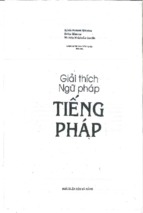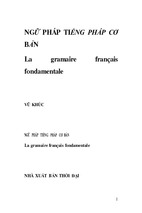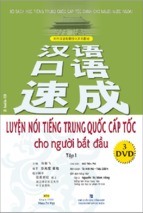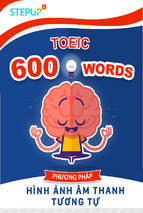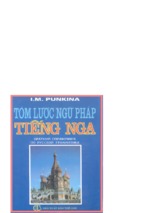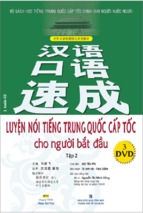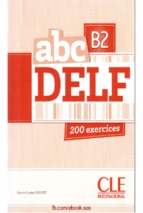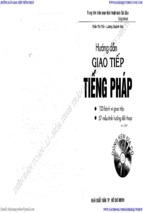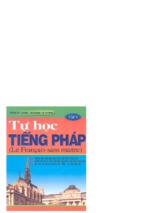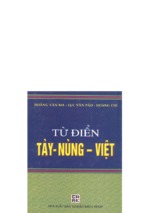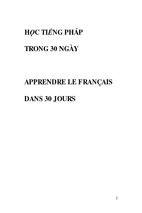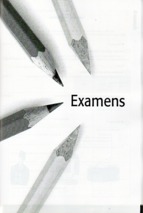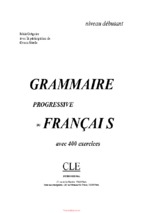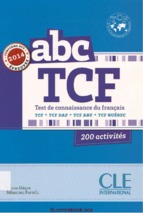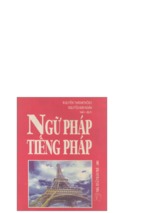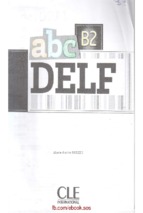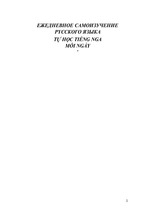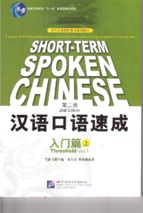Chinese Language Learning
in the Early Grades:
A Handbook of Resources and Best Practices
for Mandarin Immersion
Asia Society is the leading global and pan-Asian organization working
to strengthen relationships and promote understanding among the
peoples, leaders, and institutions of Asia and the United States. We
seek to increase knowledge and enhance dialogue, encourage creative
expression, and generate new ideas across the fields of policy, business,
education, arts, and culture. The Asia Society Partnership for Global
Learning develops youth to be globally competent citizens, workers, and
leaders by equipping them with the knowledge and skills needed for
success in an increasingly interconnected world.
AsiaSociety.org/Chinese
© Copyright 2012 by the Asia Society.
ISBN 978-1-936123-28-5
Table of Contents
3 Preface
PROGRAM PROFILE:
34 The Utah Dual Language Immersion Program
By Vivien Stewart
5 Introduction
36 Curriculum and Literacy
By Myriam Met
7 Editors’ Note and List of Contributors
PROGRAM PROFILE:
40 Washington Yu Ying Public Charter School
9 �What the Research Says About Immersion
42 �Student Assessment and Program Evaluation
By Tara Williams Fortune
�By Ann Tollefson, with Michael Bacon, Kyle Ennis,
Carl Falsgraf, and Nancy Rhodes
PROGRAM PROFILE:
14 Minnesota’s Chinese Immersion Model
PROGRAM PROFILE:
46 �Global Village Charter Collaborative,
Colorado
16 Basics of Program Design
By Myriam Met
By Myriam Met and Chris Livaccari
PROGRAM PROFILE:
22 Portland, Oregon Public Schools
48 Marketing and Advocacy
24 Staffing and Professional Development
PROGRAM PROFILE:
54 �Pioneer Valley Chinese Immersion Charter
School, Massachusetts
By Jeff Bissell and Kevin Chang
PROGRAM PROFILE:
By Christina Burton Howe
28 ��Chinese American International School,
California
56 �Classroom Materials and Other Resources
30 �Instructional Strategies: Successful
Approaches to Immersion Teaching
58 Key Information Resources
By Chris Livaccari
1
By Yu-Lan Lin
By Robin Harvey
PREFACE
Why Language Immersion? Why Now?
and Arabic, which tend to take longer for students to
master than European languages.
Moreover, early language learning has cognitive and
academic benefits beyond facility with languages. These
advantages include increased mental flexibility, improved
divergent thinking, and, some studies show, higher
scores on measures of verbal ability in the subject’s native
language. As anyone who has learned another language
knows, it also enhances a student’s understanding of the
structure and patterns of English.
Beyond the language skills acquired, learning a language gives tremendous insight into other cultures.
Today’s world language instruction goes well beyond
rehearsing verb tenses to teaching students about the
art, literature, music, history, and everyday life of other
countries. In learning about other countries or regions,
students come to understand that different languages and
cultures use different strategies of communication and
they learn to see issues from multiple perspectives. They
also develop a set of skills that enable them to adapt (code
switch) between different cultural communication strategies, a skill that is useful in our diverse communities as
well as internationally. Learning a second language can
therefore benefit students even if they do not attain high
levels of proficiency.
Polls show that parents are becoming aware of the
importance of early language learning. But unlike other
industrial countries, where learning languages is a core
part of the curriculum and instruction starts in early
elementary school, the United States does not yet offer
widespread opportunities to learn languages in primary
school. Learning opportunities vary in type, ranging
from short awareness courses, to a foreign language as
a distinct subject three times a week, to immersion pro-
By Vivien Stewart
Y
oung Americans growing up in this interconnected world need knowledge and skills that are
significantly different from those valued by previous generations. A key priority is the ability to communicate in other languages and across cultures. In today’s
globalized economy, where much economic growth is
increasingly outside the United States, there is a growing need for workers with knowledge of foreign languages
and cultures to market products to customers around the
world and to work effectively with foreign employees and
partners in other countries. Our most pressing challenges
also know no boundaries and will only be solved through
international cooperation among civil society groups as
well as governments. We need to give our students the
knowledge and tools to act effectively as citizens in this
interconnected world of the future.
Although it is certainly possible to learn a language
later in life, studies show that there is a significant advantage for those who have the opportunity to study
early. Research on cognition demonstrates that the
human brain is more open to linguistic development
in the years before adolescence, so children who learn
a language early are more likely to achieve native-like
pronunciation. Evidence also suggests that an early
education in one language makes it easier for students
to learn another language later in life. And when students start learning a language in elementary school and
continue over several years, they can more easily achieve
high levels of fluency than students who do not start a
second language until high school. This is particularly
important for the increasingly significant yet traditionally less-frequently taught languages such as Chinese
3
grams in which elementary students spend part or all of
the day learning the academic curriculum in a second
language. Immersion programs can be either full immersion (all subjects taught in the second language) or
partial immersion (part of the curriculum taught in the
second language) or two-way, dual immersion, where
half the students are native speakers of a non-anglophone language and half have English as their primary
language. Study after study has shown that children in
these immersion programs can reach far higher levels
of language proficiency than those in other programs
while showing no decrease in their achievement scores in
other subjects, even when the assessment is in English.
Immersion programs are common in some other countries, such as in Canada for example, but are relatively
rare in the United States.
Building on the encouraging research and growing
public interest in early language learning, this handbook
addresses the key issues communities need to consider
in establishing and sustaining effective early language
programs. The handbook draws from research on critical features of program design and the experiences of
pioneering programs that are at the forefront of language
learning. We hope it will contribute to more opportunities for students in their early years to learn languages,
particularly Chinese, a language we as a nation can no
longer afford to ignore.
4
INTRODUCTION
Chinese Language Immersion:
The State of the Field
same issues that now face their newer counterparts, exploring
solutions to common questions such as the following:
By Myriam Met
O
ver the last four decades, immersion programs in
many languages have seen slow but steady growth
in US schools. Research shows that immersion is
an especially effective method for language acquisition.
Immersion students gain proficiency in a new language
without any detriment to progress in their native language
or to subject matter achievement.
Chinese immersion programs are among the fastestgrowing areas of language education in American schools.
Immersion programs are increasingly popular because
they result in high levels of proficiency at relatively low
cost. Since immersion programs usually start in kindergarten or first grade, they provide ample time within a
student’s academic career for the development of oral and
written proficiency in Chinese.
In previous decades, most immersion programs have offered European languages, with a small number in other languages. Much of what is known about immersion’s effectiveness has been gleaned from these programs. Their experiences
provide useful guidance about options for program models,
teaching strategies, literacy development, and time allocation
for both the immersion language and English. While we
know a great deal about what works in immersion and why,
we are still discovering which aspects of this kind of education can be appropriately applied to Chinese instruction.
A handful of US programs in Mandarin and Cantonese
represent the pioneers in Chinese immersion. Prior to 2000,
there were fewer than ten public or private elementary school
immersion programs in either Cantonese or Mandarin. These
pioneer programs led the way for the approximately seventy
new programs now operating, most of which are still in their
infancy. These more-established programs have addressed the
• Which type of program model is most suited to Chinese
immersion: Most or all of the school day taught in
Mandarin, a fifty-fifty division between Chinese and
English, or some other distribution of time?
• What are the qualifications for teaching in Chinese immersion? Where can we find highly qualified teachers? What
does high-quality Chinese immersion instruction look like?
• What curricula and instructional materials are already
available for Chinese immersion?
• How might we approach literacy development in Chinese?
To their credit, the teachers and administrators who have
worked in the small number of long-standing Chinese immersion programs generously share their experiences, expertise, and material resources with one another as well as
with the newly emerging programs around the country. They
answer numerous inquiries made by email or phone, they
cheerfully host visitors, and they network with one another
and collaborate on important projects.
One of those projects is this handbook. In the pages that
follow readers will find the accumulated expertise of veteran
Chinese immersion program administrators and teachers.
Over time, our understanding of what makes Chinese immersion programs successful will continue to change, just
as our thinking about education in general continuously
evolves. Thus, while this handbook represents the best of
what we currently know about Chinese immersion, it represents only one step in a longer journey.
5
Editors’ Note
and List of Contributors
T
his handbook was a collaborative effort made possible by the
contributions of practitioners
of Chinese language immersion
in the elementary grades. As their
programs continue to expand, it is
increasingly important for them to
share resources, best practices, and
successful strategies.
Despite the challenges of this
relatively new model of language
teaching in the US, the benefits of
high-quality immersion programs
are sufficiently great that their numbers are growing across the country.
In the pages that follow, you will
learn about some of the most successful Chinese language immersion
programs in the US. You will also
learn about the realities of programs
that require a high level of commitment among teachers, parents, and
administrators. The resources and
models in this handbook are meant
to help you anticipate the questions
you will need to answer as you consider building your program.
Martha Abbott
�American Council on the Teaching of Foreign Languages
Michael Bacon
Portland Public Schools
Jeff Bissell
�Chinese American International School
Kevin Chang
�Chinese American International School
Norman Cao
�Global Village Charter Collaborative
Marty Chen
Utah State Office of Education
Aiping Dong
�Pioneer Valley Chinese Immersion Charter School
Kyle Ennis
Avant Assessment
Carl Falsgraf
�Center for Applied Second Language Studies
Tara Williams Fortune �Center for Advanced Research on Language Acquisition
Yiling Han
Global Village Charter Collaborative
Robin Harvey
New York University
Christina Burton Howe �Global Village Charter Collaborative
Hsiuwen Hsieh
�Pioneer Valley Chinese Immersion Charter School
Eleise Jones
Asia Society
Yu-Lan Lin
Boston Public Schools
Na Liu
Center for Applied Linguistics
Chris Livaccari
Asia Society
Myriam Met
Independent Consultant
Mary Patterson
Portland Public Schools
Nancy Rhodes
Center for Applied Linguistics
Gregg Roberts
Utah State Office of Education
Yin Shen
Portland Public Schools
Vivien Stewart
Asia Society
Sandy Talbot
Utah State Office of Education
Ann Tollefson
Independent Consultant
Jeff Wang
Asia Society
Kathleen Wang
�Pioneer Valley Chinese Immersion Charter School
Lijing Yang
�Washington Yu Ying Public Charter School
Pearl You
�Washington Yu Ying Public Charter School
Yi Zheng
Asia Society
7
What the Research Says About Immersion
This finding applies to students from a range of socioeconomic and ethnic backgrounds,2 as well as diverse
cognitive and linguistic abilities.3 Moreover, academic
achievement on tests administered in English occurs regardless of the second language being learned. In other
words, whether learning through alphabetic languages
(Spanish, Hawaiian, French, etc.) or character-based
languages (Mandarin, Japanese, Cantonese), Englishproficient students will keep pace academically with peers
in English-medium programs.4
It is important to acknowledge that early studies carried
out in one-way total immersion programs, where English
may not be introduced until grades 2–5, show evidence
of a temporary lag in specific English language skills such
as spelling, capitalization, punctuation, word knowledge,
By Tara Williams Fortune
O
ver nearly half a century, research on language
immersion education has heralded benefits such
as academic achievement, language and literacy
development in two or more languages, and cognitive
skills. This research also exposes some of the challenges
that accompany the immersion model, with its multilayered agenda of language, literacy and intercultural skills
development during subject matter learning. This chapter
outlines key findings for both advantages and challenges.
Benefits of Language Immersion
Academic and Educational
Without question, the issue investigated most often in
research on language immersion education is students’
ability to perform academically on standardized tests
administered in English. This question emerges again
and again in direct response to stakeholder concerns
that development of a language other than English may
jeopardize basic schooling goals, high levels of oral and
written communication skills in English, and gradeappropriate academic achievement. The research response
to this question is longstanding and consistent. Englishproficient immersion students are capable of achieving as
well as, and in some cases better than, non-immersion
peers on standardized measures of reading and math.1
students’ performance in literacy and mathematics: Province-wide results from Ontario
(1998–99)” in The Canadian Modern Language Review, 58 (2001): 9–26. Slaughter, H.,
“Indigenous language immersion in Hawai’i: A case study of Kula Kaiapuni Hawai’i,
and effort to save the indigenous language Hawai’i” in Immersion education: International
perspectives, eds. R. K. Johnson and M. Swain (Cambridge: Cambridge University Press,
1997), 105–129.
2 �Bruck, M., G. R. Tucker, and J. Jakimik, “Are French immersion programs suitable for
working class children?” in Word, 27 (1975), 311–341. Caldas, S. and N. Boudreaux,
“Poverty, race, and foreign language immersion: Predictors of math and English language
arts performance” in Learning Languages, 5 (1999): 4–15. Holobow, N. E., F. Genesee,
and W. E. Lambert, “The effectiveness of a foreign language immersion program
for children from different ethnic and social class backgrounds: Report 2,” in Applied
Psycholinguistics, 12 (1991): 179–198. Krueger, D. R., “Foreign language immersion in
an urban setting: Effects of immersion on students of yesterday and today” (doctoral dissertation, Milwaukee: University of Wisconsin-Milwaukee, 2001). Lindholm-Leary, K.,
Dual language education. Slaughter, H., “Indigenous language immersion in Hawai’i: A
case study of Kula Kaiapuni Hawai’i, and effort to save the indigenous language Hawai’i”
in Immersion education: International perspectives, eds. R. K. Johnson and M. Swain
(Cambridge: Cambridge University Press, 1997), 105–129.
3 �Bruck, M., “Language impaired children’s performance in an additive bilingual education
program” in Applied Psycholinguistics, 3 (1982): 45–60. Genesee, F., “French immersion
and at-risk students: A review of research evidence” in The Canadian Modern Language
Review, 63, no. 5 (2007): 655–688. Myers, M., “Achievement of children identified
with special needs in two-way Spanish immersion programs” (doctoral dissertation,
Washington, DC: George Washington University, 2009).
4 �
Lindholm-Leary, K., “Student outcomes in Chinese two-way immersion programs:
Language proficiency, academic achievement, and student attitudes,” 2011. Patterson, M.,
K. Hakam, and M. Bacon, “Continuous innovation: Making K–12 Mandarin immersion
work,” presentation at the National Chinese Language Conference, San Francisco, CA,
April 16, 2011.
1 �Genesee, F., “Dual language in the global village” in Pathways to multilingualism: Evolving
perspectives on immersion education, eds. T. W. Fortune and D. J. Tedick (Clevedon,
England: Multilingual Matters, 2008), 22–45. Lindholm-Leary, K., Dual language education (Clevedon, England: Multilingual Matters, 2001). Lindholm-Leary, K., “Student
outcomes in Chinese two-way immersion programs: Language proficiency, academic
achievement, and student attitudes” in Immersion education: Practices, policies, possibilities, eds. D. J. Tedick, D. Christian, and T. W. Fortune (Clevedon, England: Multilingual
Matters, 2011), 81–103. Turnbull, M., S. Lapkin, and D. Hart, “Grade 3 immersion
9
W H AT T H E R E S E A R C H S AY S A B O U T I M M E R S I O N
Language and Literacy
The immersion approach first gained traction in North
America because educators believed in its potential to
move students further towards bilingualism and biliteracy. Immersion language programs took root in areas such
as St. Lambert, Canada, and Miami, Florida, where educators felt that more than one language was necessary for
children’s future economic and social prosperity. Program
designers wagered that making the second language the
sole medium for teaching core subject content, instead of
teaching the second language separately, would result in
more students reaching higher levels of proficiency. These
early immersion programs started by committing half or
more of the school day for teachers and students to work
only in the second language. Students were socialized to
adopt the new language for all classroom communication
and subject learning.
This approach to second-language and literacy development has proven itself to be the most successful
school-based language program model available. Englishproficient immersion students typically achieve higher
levels of minority (non-English) language proficiency
when compared with students in other types of language
programs.9 Immersion students who begin the program
as English speakers consistently develop native-like levels
of comprehension, such as listening and reading skills,
in their second language. They also display fluency and
confidence when using it.10 Further, the more time spent
learning through the non-English language, the higher
the level of proficiency attained.
Initial concerns about the possible detriment to English
language and literacy development were eventually laid to
rest. English-proficient immersion students who achieved
relatively high levels of second-language proficiency also
acquired higher levels of English language skills and metalinguistic awareness—that is, the ability to think about
how various parts of a language function. Researchers
and word discrimination.5 That said, these studies also
find that within a year or two after instruction in English
language arts begins, the lag disappears. There were no
long-term negative repercussions to English language or
literacy development.
Does this same finding apply to students in two-way
immersion (TWI) settings whose first language is other
than English? In the past fifteen to twenty years, U.S.
researchers found that English learners’ academic achievement also attained the programs’ goals. By the upper elementary, or in some cases early secondary grades, English
learners from different ethnicities, language backgrounds,
socioeconomic levels, and developmental profiles perform
at least as well as same background peers being schooled
in English only.6Most English learners in TWI come
from Latino families whose home language is Spanish.
As an ethnic minority in the United States, Latinos are
both the fastest-growing student population and the
group with the highest rate of school failure.7 Research
in Spanish/English TWI contexts points to higher grade
point averages and increased enrollment in post-secondary education for this student group, compared to Latino
peers participating in other types of educational programs
such as transitional bilingual education and various forms
of English-medium education.
Although the vast majority of TWI research has
been carried out in Spanish/English settings, Kathryn
Lindholm-Leary8 recently reported results from a study
of two Chinese/English TWI programs. Students in
grades 4–8 whose home language was Chinese tested at
or above their grade level, and the same as or well above
peers with similar demographic profiles participating in
non-TWI programs. Leary’s findings align with those of
other TWI programs.
5 �Swain, M. and H. C. Barik, “A large scale program in French immersion: The Ottawa
study through grade three,” in ITL: A Review of Applied Linguistics, 33 (1976): 1–25.
6 �Christian, D., “Dual language education” in Handbook of Research in Second Language
Teaching and Learning, Volume II, ed. E. Hinkel (New York: Routledge, 2011), 3–20.
Lindholm-Leary, K. and F. Genesee, “Alternative educational programs for English language learners” in Improving Education for English Learners: Research-Based Approaches,
eds. California Department of Education (Sacramento: CDE Press, 2010), 323–382.
Lindholm-Leary, K. and A. Hernandez, “Achievement and language proficiency of Latino
students in dual language programmes: Native English speakers, fluent English/previous
ELLs, and current ELLs” in Journal of Multilingual and Multicultural Development, do
i:10.1080/01434632.2011.611596 (2011). Myers, M., “Achievement of children identified with special needs in two-way Spanish immersion programs.” Thomas, W. and V.
Collier, School effectiveness for minority language students (Washington, DC: National
Clearinghouse for Bilingual Education, 1997), www.ncbe.gwu.edu. Thomas, W. and
V. Collier, A national study of school effectiveness for minority language students’ long term
academic achievement (Santa Cruz, CA: Center for Research on Education, Diversity, and
Excellence, 2002).�
7 �Fry, R., Hispanics, high school dropouts and the GED (Pew Hispanic Center, 2010):
pewhispanic.org/files/reports/122.pdf
8 �
Lindholm-Leary, K., “Student outcomes in Chinese two-way immersion programs:
Language proficiency, academic achievement, and student attitudes,” 81–103.
9 �Campbell, R. N., T. C. Gray, N. C. Rhodes, and M. A. Snow, “Foreign language learning
in the elementary schools: A comparison of three language programs,” Modern Language
Journal, 69 (1985): 44–54. Curtain, H. and C. A. Dahlberg, Languages and children:
Making the match, 4th Edition (Boston, MA: Pearson Education, 2010). Forrest, L. B., “K12 foreign language program models: Comparing learning outcomes” (presentation at the
American Council on the Teaching of Foreign Languages Conference, San Antonio, TX,
November 2007). Forrest, L. B., “Comparing program models and student proficiency
outcomes” (presentation at the American Council on the Teaching of Foreign Languages
Conference, Denver, CO, November 2011). Lindholm-Leary, K. and E. Howard,
“Language development and academic achievement in two-way immersion programs,”
in Pathways to multilingualism: Evolving perspectives on immersion education, eds. T. W.
Fortune and D. J. Tedick (Clevedon, England: Multilingual Matters, 2008), 177–200.
10 �Genesee, F., Learning through two languages: Studies of immersion and bilingual education
(Rowley, MA: Newbury House, 1987). Genesee, F., “What do we know about bilingual
education for majority language students?” in Handbook of bilingualism and multiculturalism, eds. T. K. Bhatia and W. Ritchie (Malden, MA: Blackwell, 2004), 547–576.
10
W H AT T H E R E S E A R C H S AY S A B O U T I M M E R S I O N
posit that metalinguistic skills positively impact learning
to read in alphabetic languages, because they facilitate
the development of critical literacy sub-skills such as
phonological awareness and knowledge of letter-sound
correspondences for word decoding.11 The important relationship between phonological awareness and successful
reading abilities is clearly established. However, we now
also have evidence that instructional time invested in developing important decoding sub-skills in an immersion
student’s second language can transfer and benefit decoding sub-skills in their first language.12
Research about the relationship between characterbased and English literacy sub-skills continues to grow.
To date, evidence points to the transfer of phonological processing skills for children whose first language is
Chinese and are learning to read in English as a second
language.13 Studies also indicate a relationship between
visual-orthographic skills in Chinese, the ability to visually distinguish basic orthographic patterns such as correct
positioning of semantic radicals in compound characters,
and English reading and spelling.14 Much remains to be
learned in these areas, however, when it comes to Englishproficient children in Mandarin immersion programs
who are acquiring literacy in Chinese and English.
In TWI programs, research illuminates what LindholmLeary and E. R. Howard referred to as a “native-speaker
effect.”15 In a nutshell, the “native-speaker effect” describes
the tendency of native speakers of a language to outperform second language learners of the same language on
standardized measures administered in the native speakers’ language. For example, if Spanish proficients and
Spanish learners are evaluated using standardized Spanishmedium tools, Spanish proficients outperform Spanish
learners. Similar outcomes occurred when tests were given
in English and Mandarin.16
In general, research finds that immersion students
whose first language is not English become more balanced bilinguals and develop higher levels of bilingualism
and biliteracy when compared with English-proficient
students or home language peers participating in other
educational programming. For example, Kim Potowski17
found that the oral and written language skills of English
learners in TWI were only slightly behind those of recent
Spanish-speaking arrivals and significantly better than
their English-proficient peers. English learners’ higher
bilingual proficiency levels are also linked to higher levels
of reading achievement in English, increased academic
language proficiency, and successful schooling experiences in general.18
Cognitive Skill Development
There’s a well-established positive relationship between basic thinking skills and being a fully proficient bilingual who
maintains regular use of both languages. Fully proficient
bilinguals outperform monolinguals in the areas of divergent thinking, pattern recognition, and problem solving.19
Bilingual children develop the ability to solve problems
that contain conflicting or misleading cues at an earlier
age, and they can decipher them more quickly than monolinguals. When doing so, they demonstrate an advantage
with selective attention and greater executive or inhibitory
control.20 Fully proficient bilingual children have also
been found to exhibit enhanced sensitivity to verbal and
non-verbal cues and to show greater attention to their lisLeary, K. and E. Howard, “Language development and academic achievement in two-way
immersion programs,” 177–200.
17 �Potowski, K., “Student Spanish use and investment in a dual immersion classroom:
Implications for second language acquisition and heritage language maintenance” in The
Modern Language Journal, 88, no. 1 (2004), 75–101.
18 �Howard, E. R., J. Sugarman, and D. Christian, Trends in two-way immersion education: A
review of the research (Washington, DC: Center for Applied Linguistics, 2003). Kovelman,
I., S. Baker, and L. A. Petitto, “Age of bilingual language exposure as a new window
into bilingual reading development” in Bilingualism: Language and Cognition, 11, no. 2
(2008), 203–223. Lindholm-Leary, K. and F. Genesee, “Alternative educational programs
for English language learners,” 323–382. Lindholm-Leary, K. and E. Howard, “Language
development and academic achievement in two-way immersion programs,” 177–200.
Ramirez, M., M. Perez, G. Valdez, and B. Hall, “Assessing the long-term effects of an
experimental bilingual-multicultural programme: Implications for drop-out prevention,
multicultural development and immigration policy” in International Journal of Bilingual
Education and Bilingualism, 12, no. 1 (2009), 47–59. Rolstad, K., “Effects of two-way
immersion on the ethnic identification of third language students: An exploratory study”
in Bilingual Research Journal, 21, no. 1 (1997), 43–63.
19 �Bialystok, E., Bilingualism in development: Language, literacy, and cognition. (New
York: Cambridge University Press, 2001). Cenoz, J. and F. Genesee, “Psycholinguistic
perspectives on multilingualism and multilingual education” in Beyond bilingualism:
Multilingualism and multilingual education, eds. J. Cenoz and F. Genesee (Clevedon, UK:
Multilingual Matters, 1998), 16–32. Hakuta, K., Mirror of language: The debate on bilingualism (New York: Basic Books, 1986). Education, Audiovisual and Culture Executive
Agency, “Study on the contribution of multilingualism to creativity (2009), ec.europa.eu/
education/languages/news/news3653_en.htm. Peal, E. and W. E. Lambert, “The relation
of bilingualism to intelligence” in Psychological Monographs: General and Applied, 76, no.
27 (1962), 22–23.
20 �Bialystock, E., “Bilingualism: The good, the bad, and the indifferent” in Language and
Cognition, 12, no. 1 (2009), 3–11.
11 �Bournot-Trites, M. and I. Denizot, “Conscience phonologique en immersion française
au Canada” (presentation at the 1er Colloque International de Dediactique Cognitive,
Toulouse, France, January 2005). Harley, B., D. Hart, D. and S. Lapkin, “The effects of early
bilingual schooling on first language skills” in Applied Psycholinguistics, 7 (1986), 295–322.
12 �Erdos, C., F. Genesee, R. Savage, and C. Haigh, “Individual differences in second language reading outcomes” in International Journal of Bilingualism (September 14, 2010).
Genesee & Jared, 2008.
13 �Gottardo, A., B. Yan, L. S. Siegel, and L. Wade-Woolley, “Factors related to English
reading performance in children with Chinese as a first language: More evidence of
cross-language transfer of phonological processing,” in Journal of Educational Psychology,
93 (2001), 530–542. Wang, M., C. A. Perfetti, and Y. Liu, “Chinese-English biliteracy
acquisition: Cross-language and writing system transfer,” Cognition, 97 (2005), 67–88.
14 �Leong, C. K., K. T. Hau, P. W. Cheng, and L. H. Tan, “Exploring two-wave reciprocal
structural relations among orthographic knowledge, phonological sensitivity, and reading
and spelling English words by Chinese students” in Journal of Educational Psychology, 97
(2005), 591–600.
15 �Lindholm-Leary, K. and E. Howard, “Language development and academic achievement
in two-way immersion programs,” 177–200.
16 �
L indholm-Leary, K., “Student outcomes in Chinese two-way immersion programs:
Language proficiency, academic achievement, and student attitudes,” 81–103. Lindholm-
11
W H AT T H E R E S E A R C H S AY S A B O U T I M M E R S I O N
teners’ needs relative to monolingual children.21 Further,
bilingual students display greater facility in learning additional languages when compared with monolinguals.22
While much evidence supports the benefits associated with full and active bilingualism, the relationship
between language immersion education and long-term
cognitive benefits is less well-understood. Some research
does indicate greater cognitive flexibility23 and better nonverbal problem-solving abilities among English-proficient
language immersion students.24
Decades ago, Dr. Jim Cummins cautioned about the
need for a certain threshold level of second language
proficiency before cognitive skills might be positively
impacted.25 Accordingly, children who develop “partial
bilingualism” in a second language may or may not experience cognitive benefits. While some studies report positive cognitive effects for partial or emerging bilinguals,
Dr. Ellen Bialystock concurs that it is bilingual children
with a more balanced and competent mastery of both languages who will predictably exhibit the positive cognitive
consequences of bilingualism.26
Beyond economics are the countless advantages that biand multilingual individuals enjoy by being able to communicate with a much wider range of people from many
different linguistic and cultural backgrounds. Knowledge
of other languages enriches travel experiences and allows
people to experience other societies and cultures more
meaningfully. Besides access to foreign media, literature,
and the arts, bi- and multilingual people can simply connect and converse more freely. Becoming bilingual leads
to new ways of conceptualizing yourself and others. It
expands your worldview, so that you not only know more,
you know differently.
Challenges Faced
by Language Immersion
Designing, implementing, and providing ongoing support for language immersion education is no easy task.
Pressing challenges include staffing, curriculum development and program articulation. Program administrators
struggle to find high-quality, licensed teachers who can
demonstrate advanced levels of oral and written proficiency in the chosen language. Once teachers are hired, the
search begins for developmentally appropriate curriculum, materials, and resources that meet local district and
state standards. Elementary-level challenges are met with
additional secondary-level issues such as scheduling and
balancing students’ educational priorities as the program
moves up and through the middle and high school years.
Inadequate teacher preparation for immersion programs
remains a challenge in this field. Teachers need specialized professional development support to meet the complex task of concurrently addressing content, language,
and literacy development in an integrated, subject-matterdriven language program.29 However, teacher educators
and immersion specialists who can provide useful and
relevant professional learning experiences for the immersion staff are in short supply. In addition to professional
development related to curriculum design and pedagogical techniques, both native and non-native teachers report
Economic and Sociocultural
Increasingly, proficiency in a second language and intercultural competency skills open up employment possibilities. Many sectors require increasing involvement in the
global economy, from international businesses and tourism to communications and the diplomatic corps. Highlevel, high-paying employment will demand competence
in more than one language.27 In the United States, world
language abilities are increasingly important to national
security, economic competitiveness, delivery of health
care, and law enforcement.28
21 �Lazuruk, W., “Linguistic, academic, and cognitive benefits of French immersion” in The
Canadian Modern Language Review, 63, no. 5. (2007), 605–628.
22 �Cenoz, J. and J. F. Valencia, “Additive trilingualism: Evidence from the Basque Country” in
Applied Psycholinguistics 15 (1994), 195–207. Sanz, C., “Bilingual education enhances third
language acquisition: Evidence from Catalonia” in Applied Psycholinguistics, 21 (2000), 23–44.
23 �Bruck, M., G. R. Tucker, and J. Jakimik, “Are French immersion programs suitable for
working class children?” 311–341.
24 �Bamford, K. and D. Mizokawa, “Additive-bilingual (immersion) education: Cognitive
and language development” in Language Learning, 41, no. 3 (1991), 413–429.
25 �Lindholm-Leary, K. and E. Howard, “Language development and academic achievement
in two-way immersion programs,” 177–200.
26 �Bialystok, E., Bilingualism in development: Language, literacy, and cognition, 228.
27 �Fixman, C. S., “The foreign language needs of U.S.–based corporations” in Foreign language in
the workplace: Special Issue of the Annals of the American Academy of Political and Social Sciences,
eds. R. D. Lambert and S. J. Moore (Newbury Park, CA: Sage Publications, 1990), 25–46.
García, O. and R. Otheguy, “The value of speaking a LOTE [Language Other Than English]
in U.S. Business” in Annals of the American Academy of Political and Social Science, 532 (1994),
99–122. Halliwell, J., “Language and trade” in Exploring the economics of language, ed. A. Breton
(Ottawa, Ontario: Department of Cultural Heritage, 1999). Mann, A., M. Brassell, and D.
Bevan, “The Economic Case for Language Learning and the Role of Employer Engagement,”
educationandemployers.org/media/14563/ll_report_1__for_website.pdf (December 2011).
28 �Jackson, F. and M. Malone, “Building the foreign language capacity we need: Toward
a comprehensive strategy for a national language framework,” www.languagepolicy.org/
documents/synthesis%20and%20summaryfinal040509_combined.pdf (2009).
29 �Fortune, T., D. Tedick, and C. Walker, “Integrated language and content teaching:
Insights from the language immersion classroom” in Pathways to Multilingualism:
Evolving perspectives on immersion education, eds. T. Fortune, D. Tedick (Clevedon,
England: Multilingual Matters, 2008), 71–96. Howard & Loeb, 1998; Kong, 2009.
Met, M. and E. Lorenz, “Lessons from U.S. immersion programs: Two decades of experience” in Immersion education: International perspectives, eds. R. Johnson and M. Swain
(Cambridge: Cambridge University Press, 1997), 243–264. Snow, 1990. Walker, C. L.
and D. J. Tedick, “The complexity of immersion education: Teachers address the issues,”
Modern Language Journal, 84, no. 1 (2000), 5–27.
12
the need for ongoing support for their own proficiency in
the immersion language.30
Chinese teachers whose educational experiences took
place in more traditional, teacher-centered classrooms are
aware of significant cultural differences and participant
expectations. For example, US schools place a strong
emphasis on social skills and language for communicative purposes. Children expect learner-centered activities
with real-life tasks. Chinese teachers often hold a different
set of expectations for students and thus, they frequently
need support for classroom management strategies and
techniques.31
Immersion teachers face significant hurdles in the
sheer range of learner differences. The impact of students’
variations in language proficiency, literacy development,
learning support available at home, achievement abilities,
learning styles, and special needs grows exponentially
when teaching and learning occur in two languages.32
Educators and parents struggle to identify and implement
research-based policies and practices for learners who have
language, literacy, and learning difficulties. Many immersion programs lack the necessary resources and bilingual
specialists to provide appropriate instructional support,
assessment, and interventions.33
Promoting student understanding of more abstract
and complex concepts becomes increasingly difficult in
the upper elementary grades and beyond. Some upperelementary immersion teachers, in particular those who
teach in partial or fifty-fifty programs, report difficulties in teaching advanced-level subject matter because
students’ cognitive development is at a higher level than
their proficiency in the second language.34 This challenge
becomes more pronounced in programs where the immersion language is character-based, since literacy development is more time-consuming and demanding.35
One of the greatest challenges for immersion teachers
is to keep their students using the second language, especially when working and talking amongst themselves.
This challenge is particularly pronounced once the
children have moved beyond the primary grades. For instance, studies in both one-way and two-way immersion
classes point to fifth-grade students using English more
frequently than their non-English language.36 Facilitating
student use of the immersion language in ways that promote ongoing language development is an uphill battle
for teachers.37
Finally, outcome-oriented research reveals that immersion students, especially those who begin the program as
native English speakers, don’t quite achieve native-like
levels of speaking and writing skills. Studies consistently
find that English-speaking immersion students’ oral
language lacks grammatical accuracy, lexical specificity,
native pronunciation, and is less complex and sociolinguistically appropriate when compared with the language native speakers of the second language produce.38
Further, students’ use of the immersion language appears
to become increasingly anglicized over time,39 and can be
marked by a more formal academic discourse style.40 Even
in high-performing immersion programs, advancing students’ second language proficiency beyond the intermediate levels remains a sought-after goal.
36 �C arrigo, D., “Just how much English are they using? Teacher and student language
distribution patterns, between Spanish and English, in upper-grade, two-way immersion Spanish classes” (doctoral dissertation, Harvard University, Massachusetts, 2000).
Fortune, T., “Understanding students’ oral language use as a mediator of social interaction” (doctoral dissertation, University of Minnesota, Minneapolis, MN, 2001). Potowski,
K., “Student Spanish use and investment in a dual immersion classroom: Implications for
second language acquisition and heritage language maintenance,” 75–101.
37 �LaVan, C., “Help! They’re using too much English!” ACIE Newsletter, 4, no. 2 (February,
2001), 1–4.
38 �
Harley, 1984; Menke, M. R., “The Spanish vowel productions of native Englishspeaking students in Spanish immersion programs” (doctoral dissertation, University
of Minnesota, Minneapolis, MN, 2010). Mougeon, R., T. Nadaski, and K. Rehner, The
sociolinguistic competence of immersion students (Clevedon, England: Multilingual Matters,
2010). Pawley, C., “How bilingual are French immersion students?” The Canadian Modern
Language Review 41 (1985), 865–876. Salamone, A., “Student-teacher interactions in
selected French immersion classrooms” in Life in language immersion classrooms, ed. E.
Bernhardt (Philadelphia: Multilingual Matters, 1992), 97–109. Spilka, I., “Assessment
of second language performance in immersion programs” in Canadian Modern Language
Review, 32, no. 5 (1976), 543–561.
39 �Lyster, R., “Speaking immersion,” Canadian Modern Language Review, 43, no. 4 (1987),
701–717.
40 �Fortune, T., “Understanding students’ oral language use as a mediator of social interaction.” Potowski, K., “Student Spanish use and investment in a dual immersion classroom:
Implications for second language acquisition and heritage language maintenance,”
75–101. Tarone, E. and M. Swain, “A sociolinguistic perspective on second language use
in immersion classrooms,” The Modern Language Journal, 79 (1995), 166–178.
30 �C alderón, M. and L. Minaya-Rowe, Designing and implementing two-way bilingual programs (Thousand Oaks, CA: Corwin Press, 2003). Fortune, T., D. Tedick, and C. Walker,
“Integrated language and content teaching: Insights from the language immersion classroom,” 71–96.
31 �Hall Haley, M. and M. S. Ferro, “Understanding the perceptions of Arabic and Chinese
teachers toward transitioning into U.S. schools” in Foreign Language Annals, 44, no. 2
(2011), 289–307.
32 �Genesee, F., “French immersion and at-risk students: A review of research evidence,”
655–688. Fortune, T. with M. R. Menke, Struggling learners & language immersion
education: Research-based, practitioner-informed responses to educators’ top questions
(Minneapolis: University of Minnesota, The Center for Advanced Research on Language
Acquisition, 2010).
33 �Fortune, T., D. Tedick, and C. Walker, “Integrated language and content teaching:
Insights from the language immersion classroom,” 71–96. Met, M. and E. Lorenz,
“Lessons from U.S. immersion programs: Two decades of experience,” 243–264.
34 �Met, M. and E. Lorenz, “Lessons from U.S. immersion programs: Two decades of experience,” 243–264.
35 �Met, M., “Elementary school immersion in less commonly taught languages” in Language
policy and pedagogy: Essays in honor of A. Ronald Walton, eds. R. D. Lambert and E.
Shohamy (Philadelphia: John Benjamins Publishing, 2002), 139–160.
13
PROGRAM PROFILE:
Minnesota’s Chinese
Immersion Model
F
or nearly two decades, faculty and staff who
specialize in language immersion education at
the Center for Advanced Research on Language
Acquisition (CARLA)—a Language Resource Center
with partial funding from the US Department of
Education Title VI—have served as national leaders in the field of immersion education. Together,
immersion teachers, program coordinators, principals, and district administrators work with CARLA’s
university-based educators and researchers to meet
challenges, promote best practice, and provide
immersion-specific professional development to both
a local and national audience. As researchers and
teacher educators at the University of Minnesota–
Twin Cities, CARLA’s immersion projects coordinator Tara Williams Fortune and faculty advisor Diane
Tedick have also supported the design and development of new and existing immersion programs
across Minnesota.
In 2005, the Yinghua Academy Charter School
was founded in Minneapolis, as the state’s first immersion program in Mandarin. It opted for the early
total world language model and opened its doors
to more than a hundred students in grades K–3.
Kindergarten and first-grade students enrolled in
early total Mandarin immersion, while second- and
third-graders participated in a Mandarin language
and culture enrichment program. CARLA’s immersion specialists and Yinghua’s program designers
had two reasons for this approach. First, they believed that the time-intensive early total immersion
model would help children acquire character-based
language and literacy skills. Research had firmly
established that this model developed higher levels
of second-language and literacy skills when compared to the partial or fifty-fifty approach. Second,
they knew that the more time spent learning this
second language in the critical early years, the better. Studies show that immersion students are most
willing to use their second developing language in
the early primary years, and using a language is key
to acquisition.
Since then, Mandarin immersion programs in
Minnesota have had multiple streams of support, in-
cluding parent and community interest, grant opportunities through the US Department of Education’s
Foreign Language Assistance Program (FLAP),
the Minnesota Department of Education, and the
University of Minnesota’s Confucius Institute; and
new Mandarin-specific professional development offerings through CARLA’s summer immersion institutes
and STARTALK-funded initiatives. As of fall 2011,
seven of Minnesota’s sixty-three immersion programs
offer immersion in Mandarin for nearly 1,400 students. Yinghua Academy remains the only K–8 whole
school program. Two of the seven programs are charter schools (Lakes International Language Academy,
Forest Lake; Yinghua Academy, Minneapolis). The
remaining five are in four public school districts
(Eisenhower Elementary XinXing Academy, Hopkins
Public Schools; Scenic Heights Elementary and
Excelsior Elementary Mandarin Immersion Programs,
Minnetonka Public Schools; Madison Elementary
Guang Ming Academy, St. Cloud Public Schools;
Benjamin Mays International Mandarin Immersion
Program, Saint Paul Public Schools).
All of Minnesota’s Mandarin immersion programs
implement the early total one-way immersion
model, where all core subject teaching and initial
literacy instruction occurs in Mandarin. Pinyin
teaching practices vary across programs; some
intentionally withhold it until first or second grade,
so that students learn to interact with characters as
meaningful symbols, given the dominant alphabetic
print environment of the Midwest. English language arts are introduced in the second semester
of second grade or in third grade for forty-five to
seventy-five minutes daily, again depending on the
program. Time learning through English increases
steadily to reach a fifty-fifty balance between the
two languages by fifth grade. Middle-school continuation programs in Mandarin immersion will
consist of at least two yearlong courses: Mandarin
and social studies. At Yinghua Academy, students
in grades 6–8 can continue with Mandarin-medium
learning for half of the day, taking Chinese language
arts, and courses in music, social studies, culture,
and literature.
Basics of Program Design
case Mandarin Chinese) when they enter the program.
There are also two-way immersion programs, which generally involve equal numbers of English-dominant and
Chinese-dominant students, and aim to support both
groups in building their skills in both languages. All
immersion programs are predicated on the concept of
additive bilingualism, the notion that, simply put, two
languages are better than one.
There is no better way to learn a language successfully in
a school context than in an immersion program. Since the
language teacher and the content-area teacher are one and
the same, students are exposed to a much richer palette of
language and a more sophisticated range of concepts than
they would be in traditional foreign language programs.
Because teachers must function as both language and content teachers, language immersion programs are cheaper
to staff than traditional foreign language programs.
Immersion programs differ by student population,
entry grades, parent, and community goals, and most
conspicuously by their program model. The program
model determines what percentage of instruction is done
in English and what percentage in Chinese, and how this
changes over time and across grade levels.
By Myriam Met and Chris Livaccari
D
esigning a language immersion program requires a
level of commitment on the part of the administration, teachers, students, and parents that is far
beyond that of many other types of instructional programs. In making the decision of whether and how to
begin an immersion program, it is critical to consider a
number of key questions and to clarify the purposes and
goals of the program, the student population who will be
served, and how the program aligns with other programs
within the school or school district. While there are
many cognitive and academic advantages to providing
students with a rigorous and engaging immersion curriculum, it is crucial to design the appropriate type of
program that best meets the needs of students, parents,
and the school community.
Definition of Language Immersion
First, it is important to clarify some key terms in the
field. For the purposes of this handbook, a language
immersion program is defined as one that involves the
use of two languages as the medium of instruction for
academic content for no less than 50 percent of the
school day. The goal of a language immersion program
is to develop a student’s (1) proficiency in English; (2)
proficiency in a second language; (3) intercultural competence; and (4) academic performance in the content
area, at or above expectations.
For the most part, in this handbook we will refer to
one-way or foreign language immersion, which focuses
(in the United States) on populations of students who
have little or no exposure to the target language (in this
Three Critical Questions to Answer
There are three critical questions that someone considering an immersion program should carefully consider.
1. What is the fundamental mission of the program?
2. What Chinese levels (speaking, listening, reading,
writing) do students in immersion programs intend
to reach?
16
BASICS OF PROGRAM DESIGN
program needs to have a large enough number of students
in the program in the early grades. For good retention
rates, both students and parents need to be satisfied with
the quality of the program. They should see clear and
definite gains in language proficiency each and every year;
students must continue to be engaged in the program.
For schools that do not have the option of building a
pipeline beyond the elementary grades, consider whether
and how the students might be able to continue to build
their Chinese proficiency in middle school and high
school. The problem of articulation across grade levels
is critical—too many graduates of successful immersion
programs move into programs in later grades that do not
allow them to continue to develop their language skills.
3. What do immersion programs cost and what needs to
be itemized in the budget?
Question 1:
What Is the Fundamental Mission of the Program?
In thinking through this question, there are three steps:
(1) identify the audience; (2) decide how students will be
able to continue expanding their Chinese proficiency after
the elementary grades; and (3) define a program model.
Step One: One-Way or Two-Way Immersion?
Pinpointing your audience is an essential starting point.
Will the immersion program principally focus on bringing Chinese to a largely monolingual, Anglophone population of students, or are there large numbers of Chinesespeaking students, or students that are speakers of other
languages? In addition to the makeup of your student
population, take into consideration other segments of
your audience: parents, fellow schools, and other members
of your community. Does your community include large
numbers of native Chinese speakers or heritage learners?
Or will students usually come to the program with no
prior exposure to the language?
If your program is primarily focused on students with
little or no Chinese background, you will be building a
one-way immersion program. If, however, your community includes large numbers of Chinese-speaking
students, you will likely want to adopt a two-way model
that is structured so that both the English-dominant and
Chinese-dominant students are able to
build their proficiencies in both languages over time. In that case, your program
design should include opportunities for
the two groups to support each other in
their language development.
Step Three: Which Program Model?
At this point, you should consider identifying the appropriate program model. Originally most US immersion
programs were modeled after the Canadian immersion
initiative in which students were immersed in their new
language 100 percent of the school day. English was introduced at grade 2 or 3 and gradually increased to 50
percent of the elementary school day. Later, US programs
began to vary how time was allocated to each language.
Today, particularly in Chinese immersion, there are a
variety of program models. The majority of Chinese immersion programs divide the K–5 school day according to
a fifty-fifty model: 50 percent of instruction is delivered
in Chinese and 50 percent in English. Other programs
Step Two: How Long Will the Program Last?
For student language proficiency, both
in terms of bilingualism and biliteracy,
it is of course ideal to have an immersion
program that begins in pre-kindergarten
and extends through university. For
many schools, however, that is simply
not an option. Also, it is important to
remember that any program that builds
across grade levels—no matter how successful—will see some degree of attrition.
To offset this attrition in later grades, any
17
BASICS OF PROGRAM DESIGN
start with 80–100 percent of instruction in Chinese and
then offer fifty-fifty in third or fourth grade, for example.
(See the Program Profiles throughout this handbook for
examples of program models.)
Program planners recognize that each model has its
own set of advantages. It is important to note that all
programs eventually are fifty-fifty before the end of elementary school.
achievements will depend on the program model chosen.
For example, students who are in full-day Chinese immersion will probably lag behind their peers on reading
and language arts assessments until English is introduced
into their school day. These students are also more likely
to demonstrate higher levels of Chinese proficiency than
students in fifty-fifty programs. Eventually, regardless of
program model, all Chinese immersion students should
be at or above grade level in all content areas, including
English reading and language arts.
In the matrix below, developed for the fifty-fifty
Chinese language immersion programs in Utah, expected performance for students in fifty-fifty programs of
Chinese immersion is shown for listening, speaking, reading, and writing. Since Chinese immersion programs are
relatively new, there is not yet a significant body of data
to determine whether these expectations are appropriate.
It is helpful to set performance expectations in Chinese
at the outset of program planning. Knowing what the
end result of the program should be—at grade twelve,
for instance—allows targets to be set for intermediate
milestones, such as at the end of grade eight, then grade
five, and grade three. Each milestone then represents appropriate progress toward the next, and is more likely to
result in students who meet the intended end-goals of
the program. This type of planning, known as backward
design, is commonplace in many areas of education—not
just immersion
It is important that teachers and program administrators identify ways of determining whether students are
achieving program milestones. Some of the measures used
will be administered annually, and others less frequently.
Some measures will be locally developed tests, teacher
observation matrices or rubrics, and student self-reports,
such as LinguaFolio. In addition, it is very useful to use
periodically, externally developed summative assessments
For further guidance, you may wish to consult some of
the following resources:
• Center for Advanced Research on Language Acquisition
(CARLA) website:
carla.umn.edu/immersion/index.html
• Center for Applied Linguistics, “Dual Language Program
Planner: A Guide for Designing and Implementing Dual
Language Programs”
www.cal.org/twi/index.htm
• Center for Applied Linguistics, “The Two-Way
Immersion 101: Designing and Implementing a TwoWay Immersion Program at the Elementary Level”
www.cal.org/crede/pdfs/epr9.pdf
Question 2:
What Chinese Levels (Speaking, Listening,
Reading, Writing) Do Students in Immersion
Programs Reach?
Program Model Goals: Content and Language
Regardless of the program model chosen, all students are
expected to demonstrate high proficiency in Chinese,
at or above level expectations in English language and
literacy as well as subject-matter achievement. However,
the grade levels at which students demonstrate these
GRADE LEVEL
LISTENING
SPEAKING
READING
WRITING
1
Novice-High
Novice-Mid
Novice-Low
Novice-Low
2
Intermediate-Low
Novice-High
Novice-Mid
Novice-Mid
3
Intermediate-Mid
Novice-High
Novice-Mid
Novice-Mid
4
Intermediate-High
Intermediate-Low
Novice-High
Novice-High
5
Intermediate-High
Intermediate-Low
Intermediate-Low
Intermediate-Low
6
Advanced-Low
Intermediate-Mid
Intermediate-Low
Intermediate-Low
18
- Xem thêm -

